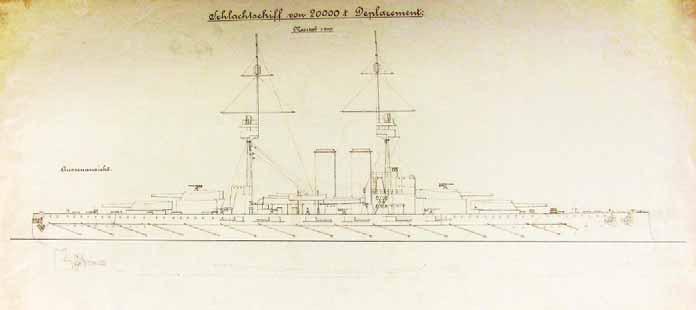moving Mignatta hoping that it would find another ship. Their wish came true, the steamer Wien of the Austrian Lloyd fell victim of the device. The captured Rossetti and Paolucci were taken on board of the Viribus Unitis where they were surprised to learn that the fleet had been transferred to the State of the Slovenes, Croats and Serbs a dozen hours before. They told Janko Vuković de Podkapelski, the last Austro-Hungarian commander of the battleship, who on the preceding day had been promoted to kontraadmiral by Zagreb, that they had attached a magnetic mine to the ship. Vuković immediately ordered abandon ship, the two Italians jumped into the water where they were picked out later by one of the boats of the Viribus Unitis. When the explosion did not occur at the time indicated by Rossetti, Vuković and his men returned to the battleship, bringing the two Italians with them. At 6:30 a.m. (other sources state 6:44 am) an explosion shook the ship when the magnetic mine detonated. The outraged sailors wanted to force their Italian prisoners to go down with the ship, locking them in a cabin. Vuković barely succeeded to talk them out of this inhumane act. Fourteen minutes after the explosion the Viribus Unitis capsized and sank. Rossetti and Paolucci survived the sinking, while their savior, Vuković perished. The exact number of the victims is unknown, because on those chaotic days no one administrated the number of the men on board or the number of the survivors. In the Pola cemetery there are around forty graves of the victims of the sinking of the Viribus Unitis. Estimates range between 50 and 400 deaths, the truth may be closer to 50. On the sketches of the wreck made by the Italians in the 1920s it is clearly visible that the edge of the armored deck separated from the side shell plating which enabled the flooding of compartments above this deck, as had occurred in the case of the Szent István. Allegedly the watertight doors which had been closed and sealed at the start of the war were opened by the celebrating crew, which can help to explain the rapid sinking of the battleship.531 The wreck was broken up by the Italians in the 1920s. Some parts of the ship are now on display in Venice: an anchor, together with the Tegetthoff ’s anchor and a small section of the bow. Rossetti and Paolucci as prisoners of war were taken to a hospital ship. They were freed when the Italian Navy took control of Pola on 5 November.
They were presented with gold medals for bravery and they were awarded more than 1 million Lire from the Italian government as a reward for their services. The jealous Costanzo Ciano, the commander of the MAS flotilla in Venice demanded a part of the reward for himself stating that he had been co-inventor of the Mignatta. Due to Rossetti’s protest Ciano was deprived of the reward.532 Rossetti, who felt remorse, gave a great part of his reward of 650,000 Lire (1 percent of the value of the Viribus Unitis) to the widow of Vuković. The money was used to establish a trust fund for widows of other war victims. Rossetti later wrote a book and he offered the revenue to the family of Vuković. With the advent of the Fascism in Italy he founded an Anti-Fascist movement and later had to leave the country. Thanks to his activity the Italian government revoked his gold medal during the Spanish Civil War. Raffaele Paolucci, now conte di Valmaggiore, followed a political career during the Fascist regime beside his medical career, although he was rather a Monarchist than a Fascist. After his rehabilitation he continued his political career from 1953 until his death in 1958. End of a Sea Power After the turn over the fleet to the National Council of Zagreb, the non-South Slavs had to abandon the ships they had under their control. Over the next several days they had to organize the homeward journey of the other nationalities amidst the chaos. It was not an easy task, at least in the case of the Hungarians, because the majority of the Hungarian officers left Pola immediately after the turnover of the fleet, leaving behind their men. Only a handful of junior Hungarian officers remained in Pola to help organize the return of the Hungarian sailors which took place in the first days of November. The Hungarian committee which organized the return journey made an advertisement which was published in the newspapers of Pola thanking the South Slavs for their help in repatriating the sailors.533 The Allied Powers naturally did not recognize the turnover of the fleet, the Italians being especially angry. From 30 October, armistice talks took place at Villa Giusti outside of Padua between Italy and Austria-Hungary. The Austro-Hungarian
— 148 —






























